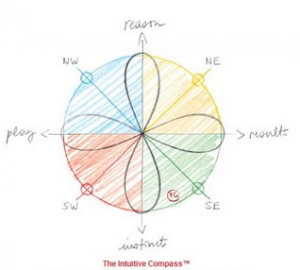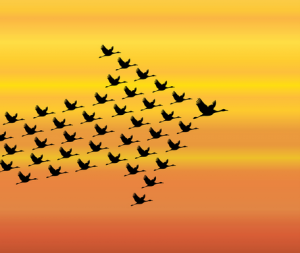This week we continue exploring techniques to sharpen and hone your intuition. For more about the case for intuition in business, check out last week’s post.
Relax and Practice Noticing
- the world-renowned mime Marcel Marceau said, “Our body knows things the mind does not have access to.” The best gateway to information from our subconscious mind about the world around us is through a relaxed body. The most efficient way to relax our body is not a five-star vacation, it is breathing. Breathing can dramatically alter our experience in any given moment. You can do this almost anywhere with a simple meditation. Sit quietly with both feet on the floor, hands at rest on your thighs, eyes closed. Don’t try to alter your breathing in any way, just pay attention to it. Don’t think about anything–not your problems, not even happy things–simply focus on the movement of your breath. Do this for a minute, or five minutes, or as long as you like, Taking this little break, even for just five minutes, may at first make you anxious, but give yourself permission to take five minutes in which you do nothing but breathe. To focus on your breathing, simply notice the movement of your diaphragm–the horizontal muscle that moves up and down in your mid-torso. when your diaphragm goes, up, you exhale and your rib cage narrows. When your diaphragm goes down you inhale and your ribcage expands. Becoming mindful of the movement of your diaphragm is enough to largely improve your breathing. When you give yourself this permission, your body will relax and your breath will deepen naturally.
- Pay attention. It is very easy to stop noticing small things, or even large things. Buddhists have a practice of mindfulness in which every movement, whether lifting a cup of tea to one’s lips or placing a foot on the ground while walking, is afforded the greatest attention. Be mindful during a routine event such as eating breakfast; afterward, record the sensations, thoughts, and emotions that arose in the short interval.
After you have tried the exercises from both this week’s and last week’s post, keep practicing the ones that resonate with you. Over time these exercises will help your intuitive abilities get stronger and will make it more likely that they will become natural part of your daily life. Intuition is a skill not made by either nature alone or nurture alone. We are born with a capability, and we turn it into a capacity by using it over and over again. Once you’ve identified the exercise of the few exercises that are most natural to you, with regular practice you will improve your ability to reflect about a decision or a situation beyond pure logic. This will greatly enhance your ability to pay attention and notice, to trust the unknown and tolerate the confusion that comes with ambiguity and complexity. You will be more comfortable with your own subjectivity. It will prevent you from too quickly jumping to a logical conclusion, which would not necessarily get you to the most creative answers









